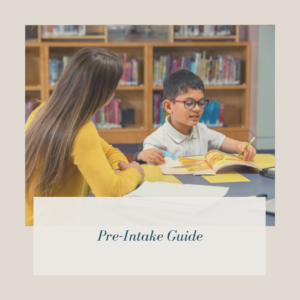No products in the cart.
Written by Sarah Schwartz
Many people struggle greatly with anxiety in their day to day lives. Youngsters are no different. The beginning of a new school year presents a great opportunity to implement routines aimed at reducing the amount of anxiety your child experiences. Some amount of anxiety is inevitable. However, through planning and organization, it can be kept to a minimum.
A good place to start is by helping your child map out due dates and exams for each course she is taking. Your child’s teacher should give them a syllabus at the beginning of each term. Sit down, and, using an application such as Google Calendar (or even a paper planner, if that’s preferred) help your child enter test and due dates. From there, help her determine the discrete tasks (and how long these should take) necessary for accomplishing each goal. These should be put into the planner/calendar as well.
If your child does not have a quiet place to study with time set aside each day, this must be established. A routine of completing items due the next day, followed by time spent working on smaller items necessary to achieving long term goals will be guided by information entered into the planner. Thus, your child should start each session by reviewing the calendar/planner.
Good overall organization is also important. If your child has trouble organizing papers, an accordion style folder, with labels for each subject can be used to store teacher handouts. A separate folder for completed assignments waiting to be turned in will prevent misplacement. The important part of organization is consistency. If your child is not keeping up the system during the day at school, help her incorporate the necessary steps into her daily study routine, before consulting her planner.
For further suggestions on planning and organizing for middle and high school students, check out this GreatSchools article.
Even organized, well-prepared students experience anxiety, particularly right before a test. For these times, breathing exercises are regarded as the first line of attack. Here is the simplest one I have found. It is from Dr. Andrew Weil’s website:
- Exhale completely through your mouth, making a whoosh sound.
- Close your mouth and inhale quietly through your nose to a mental count of four.
- Hold your breath for a count of seven.
- Exhale completely through your mouth, making a whoosh sound to a count of eight.
- This is one breath. Now inhale again and repeat the cycle three more times for a total of four breaths.
I hope the above advice was helpful. For students dealing with only a moderate amount of anxiety, it should be. However, if you feel your child is experiencing a significant amount of anxiety, it is a good idea to involve a professional. The Anxiety and Depression Association of America website offers guidelines and suggestions for coping with anxiety. This link will take you directly to information specific to children and teens.



No comment yet, add your voice below!